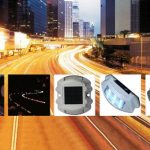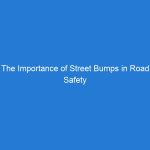Overview
What are cable speed bumps?
Cable speed bumps, also known as cable protectors or cable ramps, are devices designed to slow down vehicles and protect cables and hoses that are laid across roadways. They are typically made of durable materials such as rubber or plastic and feature channels or grooves to securely hold and cover cables. Cable speed bumps are commonly used in construction sites, parking lots, and other areas where temporary or permanent cable installations are required. These speed bumps effectively prevent vehicles from damaging or dislodging cables, ensuring the safety of both the cables and the vehicles.
Importance of selecting the right cable speed bumps
Selecting the right cable speed bumps for your roadway is of utmost importance. These speed bumps play a crucial role in ensuring the safety of both drivers and pedestrians. By choosing the appropriate cable speed bumps, you can effectively control the speed of vehicles, preventing accidents and promoting a smoother traffic flow. Additionally, the right cable speed bumps can help protect underground cables, wires, and other utilities, preventing damage and costly repairs. Therefore, it is essential to carefully consider factors such as the material, design, and installation requirements when selecting cable speed bumps for your roadway.
Factors to consider when selecting cable speed bumps
When selecting cable speed bumps for your roadway, there are several factors to consider. Firstly, you need to assess the traffic volume and speed on your road. This will help determine the height and width of the speed bumps needed to effectively slow down vehicles. Secondly, consider the type of vehicles that will be using the road. Heavy-duty vehicles may require stronger and more durable cable speed bumps. Additionally, it is important to consider the climate and weather conditions in your area. Extreme temperatures or frequent rainfall may affect the durability of the speed bumps. Finally, take into account any specific regulations or guidelines set by local authorities regarding the installation of cable speed bumps. By considering these factors, you can ensure that you select the right cable speed bumps for your roadway.
Types of Cable Speed Bumps
Surface-mounted cable speed bumps
Surface-mounted cable speed bumps are an effective solution for controlling vehicle speed and protecting cables on roadways. These speed bumps are designed to be installed directly on the surface of the road, making them easy to install and remove as needed. They are made from durable materials that can withstand heavy traffic and adverse weather conditions. Surface-mounted cable speed bumps are ideal for areas where temporary cable protection is required, such as construction sites or events. By slowing down vehicles and providing a physical barrier, these speed bumps help prevent accidents and damage to cables, ensuring the safety and functionality of the roadway.
Recessed cable speed bumps
Recessed cable speed bumps are an essential component of roadway safety. These speed bumps are designed to effectively slow down traffic while also allowing for the safe passage of vehicles. Unlike traditional speed bumps, recessed cable speed bumps are installed flush with the road surface, minimizing the impact on vehicle suspension and providing a smoother driving experience. They are typically made of durable materials such as rubber or plastic, ensuring long-lasting performance even in harsh weather conditions. Recessed cable speed bumps are ideal for areas where maintaining a constant flow of traffic is crucial, such as parking lots, residential streets, and industrial areas. With their ability to enhance road safety and minimize vehicle damage, recessed cable speed bumps are an excellent choice for any roadway.
Modular cable speed bumps
Modular cable speed bumps are an excellent solution for managing and controlling traffic flow in roadways. These speed bumps are designed with multiple interlocking modules, allowing for flexibility in installation and customization. They are specifically designed to accommodate cables and wires, making them ideal for areas where underground utilities need to be protected. Modular cable speed bumps are durable and can withstand heavy traffic, ensuring long-lasting performance. Additionally, they are highly visible with reflective markings, enhancing safety for both drivers and pedestrians. With their modular design and practical functionality, modular cable speed bumps are a reliable choice for effectively managing traffic and ensuring the smooth flow of vehicles on roadways.
Choosing the Right Cable Speed Bumps for Your Roadway
Traffic volume and speed
When selecting the right cable speed bumps for your roadway, it is important to consider the traffic volume and speed. High traffic volume areas with fast-moving vehicles require more robust and durable cable speed bumps to effectively slow down the vehicles. On the other hand, low traffic volume areas with slower speeds may only require lighter and less aggressive cable speed bumps. Understanding the traffic volume and speed of your roadway is crucial in choosing the appropriate cable speed bumps that will enhance road safety and ensure smooth traffic flow.
Roadway conditions
Roadway conditions play a crucial role in determining the right cable speed bumps for your roadway. Factors such as traffic volume, speed limits, and the type of vehicles using the roadway should be considered. For high-traffic areas with heavy vehicles, durable and sturdy cable speed bumps are recommended to ensure maximum effectiveness and longevity. On the other hand, for low-traffic areas with lighter vehicles, a less aggressive cable speed bump may be sufficient. Additionally, the condition of the road surface, such as potholes or uneven pavement, should also be taken into account when selecting the right cable speed bumps. By evaluating the roadway conditions thoroughly, you can choose the most suitable cable speed bumps that will enhance safety and traffic control on your roadway.
Installation requirements
When it comes to installing cable speed bumps on your roadway, there are a few important requirements to consider. First, you need to ensure that the road surface is clean and free from any debris or obstructions. This will help to ensure a smooth and secure installation. Additionally, it is important to accurately measure the width of the road to determine the appropriate size and number of speed bumps needed. Lastly, proper signage should be installed to alert drivers of the presence of speed bumps and to promote safe driving. By following these installation requirements, you can ensure that your cable speed bumps are installed effectively and contribute to a safer roadway environment.
Installation and Maintenance of Cable Speed Bumps
Proper installation techniques
Proper installation techniques are crucial when it comes to cable speed bumps for your roadway. Ensuring that the speed bumps are installed correctly not only enhances their effectiveness but also prolongs their lifespan. The first step in proper installation is to carefully measure and mark the location where the speed bumps will be placed. This ensures that they are evenly spaced and aligned with the road. Next, the area should be cleaned and prepared to ensure proper adhesion of the speed bumps. Finally, the speed bumps should be securely fastened to the road using appropriate hardware. Following these installation techniques will ensure that your cable speed bumps are installed correctly and provide the desired traffic calming effect.
Regular maintenance and inspection
Regular maintenance and inspection are crucial for ensuring the effectiveness and longevity of cable speed bumps on your roadway. It is important to regularly check the condition of the speed bumps, including any signs of wear and tear or damage. This can help identify any issues early on and prevent further damage or accidents. Additionally, routine maintenance such as cleaning and repainting can help maintain the visibility and functionality of the speed bumps. By conducting regular inspections and maintenance, you can ensure that your cable speed bumps continue to provide a safe and efficient traffic calming solution for your roadway.
Repairing damaged cable speed bumps
When it comes to repairing damaged cable speed bumps, there are a few important steps to follow. First, assess the extent of the damage to determine if it can be repaired or if the speed bump needs to be replaced. Next, gather the necessary tools and materials for the repair, such as asphalt patching material, a trowel, and a tamper. Clean the damaged area thoroughly before applying the patching material, ensuring that it is level and smooth. Once the repair is complete, allow sufficient time for the patch to cure before allowing traffic to drive over the speed bump again. Regular inspections and maintenance should also be conducted to prevent further damage and ensure the longevity of the cable speed bumps.
Conclusion
Importance of selecting the right cable speed bumps
Selecting the right cable speed bumps for your roadway is of utmost importance. These speed bumps play a crucial role in ensuring the safety of both drivers and pedestrians. By choosing the appropriate cable speed bumps, you can effectively control the speed of vehicles, preventing accidents and promoting a smoother traffic flow. Additionally, the right cable speed bumps are designed to accommodate cables and wires, allowing for easy installation and maintenance. Therefore, it is essential to carefully consider factors such as durability, visibility, and compliance with regulations when selecting cable speed bumps for your roadway.
Enhancing road safety
Road safety is a top priority for any community, and one effective way to enhance it is by installing cable speed bumps on roadways. These speed bumps are specifically designed to slow down vehicles and encourage drivers to adhere to the designated speed limits. By strategically placing cable speed bumps in high-risk areas, such as school zones or residential neighborhoods, the chances of accidents and injuries can be significantly reduced. Additionally, cable speed bumps are highly visible and easy to install, making them a cost-effective solution for improving road safety. With their ability to effectively control vehicle speed and promote safer driving habits, cable speed bumps are an essential tool for creating safer roadways for everyone.
Long-term cost savings
When selecting the right cable speed bumps for your roadway, it is important to consider the long-term cost savings. Cable speed bumps that are durable and require minimal maintenance can help reduce expenses over time. By investing in high-quality cable speed bumps, you can avoid frequent replacements and repairs, saving both time and money. Additionally, choosing cable speed bumps that are easy to install can also contribute to cost savings by reducing labor costs. Therefore, it is crucial to carefully evaluate the long-term cost implications when making a decision on the right cable speed bumps for your roadway.







